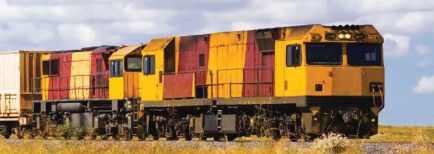Background on Wivenhoe Power Station
Wivenhoe Power Station is one of Australia’s largest Hydro Pumped Storage Power Station consisting of two 285Mw Francis Turbines (570Mw total).
· Commissioned in 1984 with an expected design life of 100 years
· Each unit undergoes an overhaul every four years to ensure reliability is maintained and statutory requirements are met. With both units on a rotating roster this essentially means an overhaul every two years.
Pump and Turbine Glands
· The pump gland’s function is to seal the main shaft to contain process water or air within the pump, while the turbine glands contain the process water and air within the turbine.
* This critical asset if not overhauled correctly can lead to excessive gland leakage. This could result in exponentially increased maintenance and running costs, and even plant failure.
· The gland casings consist of three rows and a cover. Each row contains 12 segments, and the cover 6 to give 42 individual segments per gland.
· The glands were originally made from carbon steel, which means they have been very susceptible to corrosion/erosion after years in service which has led to more leakage around the main shaft.
· Berg were engaged by Cleanco (CS Energy) to carry out the refurbishment of both sets of glands to restore the casing internal surfaces and re-establish the mating and sealing faces
Basic scope of work
· Remove all previous coatings, inserts and all corrosion from the gland segments by grit blasting
· Re-establish the structure of the glands. This included repairs to the mating faces of the segments to ensure that the gaskets had a suitable mating surface between each segment and was conducted using a stainless steel overlay to provide corrosion resistance.
· Re-establish all sealing surfaces which was achieved by fitting stainless steel “inserts” to reclaim the sealing face. The use of stainless steel significantly improves the life span and makes the glands less susceptible to corrosion.
· All critical dimensions were reclaimed. Ensuring all specifications were met and documented.
· Painting with Cleanco approved paint specification designed specifically with corrosion protection in mind
Tracks and rollers
· The guard gate is the primary safety penstock water shut off device to the turbine. Consisting of 3 sections and approx. 110 tonnes in mass. It is closed by gravity alone.
· Berg is heavily involved in the manufacture of the guard gate tracks, rollers, and roller chain sets.
· The tracks and rollers require very specific heat treatment to achieve tightly toleranced mechanical properties and ensure suitable hardness and toughness are achieved while maintaining sufficient ductility. The end result is to handle frictional forces of the gate closing under its own weight, but also to prevent galling between the two components.
· The original material specification dates to the early 80’s and with progression in material development, alternate materials with improved performance characteristics are now available.
· The current specification for 431 SS has seen significant issues with embrittlement occurring during the heat treatment process deeming the components not fit for use. Berg are currently working through trials with Cleanco for the use of a more corrosive resistant precipitation hardening material (630SS – 17-4 PH) for the tracks and rollers that will still offer the mechanical properties required. Testing for the material includes chemical composition, impact values, macro, micro, and SEM analysis to ensure suitability.


